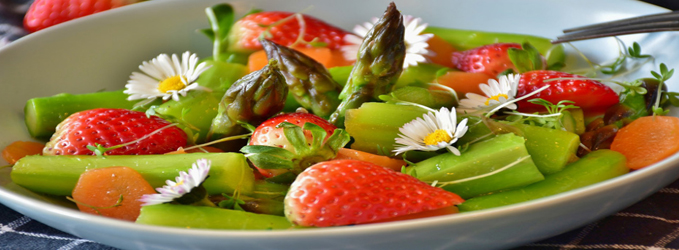Food is the basic necessity of life. It includes all edible items. The science of food and its action in our body is called as nutrition. It includes the study of body demands at various stages of life and during various disease conditions. In this booklet, let us try to understand nutrition in dialysis patients. To understand nutrition in dialysis patients, we first need to understand about dialysis.
Dialysis:
There are 5 stages of kidney disease and the last stage is called Chronic Kidney Disease (CKD) stage 5 or End Stage Renal Disease (ESRD). This stage requires replacement of functions kidneys as the native kidneys can no longer perform its functions adequately. Hence, this replacement can be achieved either through dialysis or by replacing with a new kidney; that is, kidney transplant.
In case the damaged kidneys are replaced with a new kidney, all of the lost functions can be achieved back. However, when the replacement is done through dialysis, only few functions can be achieved. This leads to several ups and downs in body which need to be controlled through diet. Hence, diet plays an important role in dialysis patients.
Dialysis diet:
Diet in dialysis patients includes the following and we will try to understand each one of them in details.
- High protein diet
- Low fluid diet
- Low salt diet
- Low potassium diet
- Low phosphorus diet
- High Protein Diet
- The dialysis procedure involves loss of proteins and hence these proteins need to be compensated through diet.
- Hence, additional amount of protein are required in dialysis patients compared to normal individuals.
- Dialysis patients need to be given 20% additional proteins as compared to normal population.
- This can be achieved through following dietary modifications:-
- For vegetarians:-
- For vegetarians, milk and milk products are best sources of proteins.
- Due to the fluid restriction, it is wise to select non-liquid milk products like curd or paneer (also called as chhena or cottage cheese). Paneer is an excellent choice for dialysis patients. It can be added to a variety of recipes in desired amounts.
- Non diabetic patients can include paneer based sweets in diet like rasgullas, sandesh , etc.
- Although cream (malai), ghee, khoya (mava) are milk based but as they contain excessively high amount of fats, they are not advisable.
- Although vegetarian class proteins are not first class proteins, as compared to non- vegetarian class, but when used as combinations (for example, cereal-dal combination), they can be considered equivalent to first class proteins.
- Hence it is advisable to use recipes containing cereal – dal combination like khichdi, idli, dosa, etc.
- Milk powders contain high amounts of phosphorus, hence, it is advisable to prefer other nutritional supplements instead of milk powder.
- For Non–vegetarians:-
- All non-vegetarian sources like eggs, fish, meat, sea foods are first class proteins (i.e they are high biological value proteins - our body can utilize them efficiently); however, they are rich sources of cholesterol too. Hence, wise selection is advised.
- It is safe to opt for egg whites as it provides best quality protein. Yellow portion contains cholesterol, hence, should be taken once in a week.
- Various recipes of egg whites can be made including sweets as well as savouries.
- Egg white powder can also be used.
- Fish and chicken too are good sources of proteins. However, it is advisable to use them in either boiled, grilled, barbequed form rather than frying in order to decrease its fat content.
- Non diabetic patients can consume fish/chicken (2/3 small pieces) three-four times in a week, however ,diabetics and patients with heart problems should restrict its use to once in a week. To keep up their protein levels, they can prefer only egg whites.
- Remaining sources of non-veg which includes mutton, beef, pork, etc should be avoided as they are rich sources of cholesterol.
- Sea foods including dried fishes, crabs, lobsters, etc should be avoided, as they too contribute to cholesterol.
- Low fluid diet
- Normal kidneys are well equipped with mechanism that can balance your salt and water.
- However, when they become weak, they can no longer fulfill this functions completely, leading to complications like
- accumulations of fluids in the body which can be seen either in the form of swelling on feet or puffiness of face or
- raised blood pressure.
- Hence it is essential to decrease the intake of salt and water.
- Tips to reduce salt and water:
- Always ask your Nephrologist about the amount of fluids that are allowed for you.
- Anything that turns into liquid at room temperature is considered as fluid, for example, ice cream.
- Always bottle up the recommended amount of fluid in a measured bottle to keep a track on amount consumed.
- You may consume your morning medicines with tea or milk in order to save water.
- Always prefer gargling after meals, this can help you in preventing excessive water intake.
- Avoid salty and spicy food items as they make you feel thirsty.
- Avoid going out for walks or exercises in too hot climates. You may prefer the same indoors.
- Diabetics should maintain sugar level under control as high sugars can make you feel thirstier.
- Avoid all fluids that have their solid substitutes, for example, you may use salads instead of soups, fruits instead of juices, thick curd instead of thin butter milk.
- Avoid all alcoholic beverages and cold drinks.
- Instead of water you may suck ice cubes as they can help you overcome dryness of mouth.
- During outings or vacations, avoid consumption of beverages like tea, coffee, etc; instead you can have additional snacks containing less salt.
- Chewing gums can be used to resist frequent urges of thirst (sugar free chewing gums can be used by diabetics)
- Weigh yourself daily (preferably on same weighing scale) and keep a record of your weight in a dairy.
- Regularly check your feet for swelling and if any, report it to your dialysis clinic.
- Low salt diet
- Avoid using low sodium salts as they are high in potassium.
- Foods containing baking soda like papads, bakery products such as cakes, kharis, puffs, pasteries, cookie, etc should be avoided.
- Foods which are an additional source of salt in diet such as sauces, chutneys, pickles, seasoning mixes should be used sparingly.
- To make food palatable, you may add few drops of lemon juice, vinegar, tamarind pulp or raw mango pulp to your recipes.
- To compensate for taste of salt, you may add seasonings like amchur powder, pudina leaves, tulsi leaves, oregano, mixed herbs, ginger green chilli paste, garam masala powder.
- Avoid processed cheese and salted butter, instead you may use paneer and homemade butter respectively.
- Avoid packed non veg sources like processed meat, broths, canned fish, etc as they contain high amount of salt.
- Avoid packed dry snacks like chips, chiwdas, farsan, cookies etc. Instead prefer homemade dry snacks with low amount of salt.
- In daily routine, avoid adding salt to recipes that do not need its presence like chapattis, bhakaris, parathas, rice ,salads ,curds.
- Avoid adding salt during bulk cooking, separate your portion first and then add salt in it as this will reduce overall consumption of salt. If this may not seem to be practical, add minimum amount of salt to the bulk receipe and portion it out first for yourself.
- Low potassium diet
- Potassium is a mineral present in the body and maintaining a balance of it is one of the several functions of our kidneys.
- When kidneys fail their ability to remove potassium from the blood decreases and hence, potassium level may begin to rise in the blood.
- This raised potassium can affect the normal rhythm of heart causing complications which can lead to loss of life.
- Hence restriction of potassium through diet is extremely important.
- Following are tips to control potassium through diet:
- Potassium is widely present in a number of foods .Hence, careful selection of foods is necessary.
- High amounts of potassium is present in coconut water and hence they should be strictly avoided.
- Fruit juices too contain high amounts of potassium ,hence they should be avoided.
- Chocolates , nuts and dry fruits too should be avoided.
- Soups (veg /non-veg/broths/ preserved gravies should be avoided.
- Canned or tinned food items should be avoided.
- Before consuming any packaged food items, always read its contents carefully and if its potassium content is more than 200 mg/serving, it is best avoided.
- If your potassium level tends to remain on a higher side, you may switch over to jowar flour chapatti or rice flour and maida based chapatti (avoid rice flour and maida if you are a diabetic) instead of wheat flour chapatti .
- Remember that even a food item which has low potassium content can turn into high potassium if consumed in excess.
- To reduce the amount of potassium from vegetable, especially green leafy vegetables like spinach and roots like potato, sweet potato, etc, you can use a process called as leaching. For leaching you need to peel, chop the vegetables and soak them in generous amount of water for 1-2 hours. Then discard the water and the cook the vegetables. Although this process does not remove the entire amount of potassium but it can be used to include more variety of vegetables in diet.
- Low phosphorus diet
- Phosphorus is a mineral found I many food items. The dialysis machine is not efficient enough to remove phosphorus from your blood.
- If you have higher levels of phosphorus in blood, it tends to pull out calcium from your bones making them weak and fragile.
- High levels of phosphorus are also associated with itchy skin.
- Hence, it is important to lower phosphorus amount through diet.
- Additionally, several patients need medications called as phosphate binders to maintain phosphorus under control.
- Almost all foods that are rich in proteins are rich sources of phosphorus too. This leads to careful selection of proteins when phosphorus in the blood increases.
- Herewith are certain tips to reduce phosphorus from diet:
- Limit the intake of milk and its products.
- For vegetarian, curds (cow’s milk) should be preferred over paneer as paneer has higher amount of phosphorus.
- Amongst vegetable, cut down on carrots as they are high in phosphorus.
- Non –vegetarian may continue eating egg whites, however it is advisable to include phosphate binders as prescribed by the Nephrologist to maintain phosphorus levels.
- Consider replacing animal milk with soya milk which is lower in phosphorus.
- Avoid wheat flour items and use plain flour instead.
- Avoid brown rice, use plain rice instead.
- Avoid chocolates, cocoa based drinks, nuts and dry fruits.
Herewith we have tried to gain a detailed insight about dialysis diet. Now let’s have a look at several recipes that can be taken by dialysis patients. We have tried to modify certain recipes in order to make it suitable for dialysis patients. We have also tried to include recipes from each meal; for example, breakfast, lunch, snacks, dessert, etc. We have tried to provide regional recipes for the best interest of maximum dialysis population in our country.
31 Jul
By Dr R Jasani



